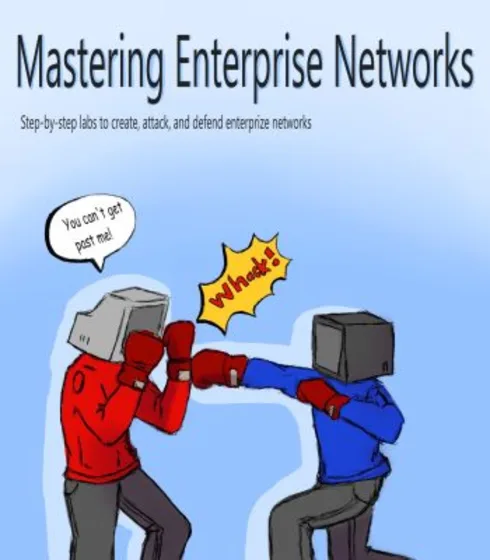
Mastering Enterprise Networks
![]()
![]()
![]()
![]()
![]()
Mathew J. Heath Van Horn, Embry-Riddle Aeronautical University
Copyright Year:
Publisher: Embry-Riddle Aeronautical University
Language: English
Formats Available
Conditions of Use
![]() Attribution
Attribution
CC BY
Reviews
Reviewed by Billy Gardner, Associate Professor, Marshall University on 5/10/25
The textbook offers an in-depth, lab-oriented approach to enterprise network defense, including IDS/IPS configuration using Snort and pfSense. It is well-suited for students with prior exposure to network concepts. While highly detailed in... read more
![]()
![]()
![]()
![]()
![]()
Reviewed by Billy Gardner, Associate Professor, Marshall University on 5/10/25
Comprehensiveness
The textbook offers an in-depth, lab-oriented approach to enterprise network defense, including IDS/IPS configuration using Snort and pfSense. It is well-suited for students with prior exposure to network concepts. While highly detailed in procedures and implementation, it lacks a conventional index or glossary, which would enhance usability and quick reference.
Content Accuracy
The content is technically accurate and reflects current best practices in enterprise networking and cybersecurity. Lab instructions are precise, and there is no indication of bias or misinformation. Open-source tools are appropriately documented, and references are credible.
Relevance/Longevity
The book is highly relevant for today's cybersecurity landscape. It emphasizes open-source solutions that remain stable over time (e.g., pfSense, Snort, Kali Linux), allowing the material to age well. The modular structure also enables easy updates as technologies evolve.
Clarity
The text is written in clear, instructional prose, suitable for students at an intermediate level or higher. While most jargon is explained within the lab steps, a glossary would be helpful for beginners unfamiliar with certain terms.
Consistency
The textbook maintains consistent use of terminology and formatting across labs and chapters. Lab structures and expectations are uniformly presented, promoting a reliable learning experience.
Modularity
Each lab is standalone and clearly defined, making it easy to assign individual sections throughout a course. The textbook avoids excessive cross-referencing, supporting flexible instructional use and curriculum alignment.
Organization/Structure/Flow
Topics progress logically from prior knowledge (such as building a virtual lab) to more advanced concepts like intrusion prevention. Instructions are well-sequenced, and each lab includes prerequisites, objectives, steps, and deliverables.
Interface
The book is generally clean and functional, with appropriate use of screenshots and diagrams. However, minor formatting inconsistencies (e.g., duplicated links or navigation labels) could confuse some readers and should be corrected in future versions.
Grammatical Errors
The textbook is well-edited and free of major grammatical errors. The writing style is consistent with technical instructional materials.
Cultural Relevance
The text is culturally neutral and free from offensive or exclusionary language. It focuses on technical content and avoids inappropriate examples or assumptions.
CommentsMastering Enterprise Networks is a strong resource for hands-on cybersecurity instruction. It is particularly well-suited for college-level students in computer science or cybersecurity programs seeking practical lab experience. Its use of widely adopted, open-source platforms enhances both accessibility and applicability. Adding an index and glossary in future editions would significantly improve its comprehensiveness and accessibility for newcomers.
Table of Contents
- Introduction
- Part I. Setting Up the GNS3 Environment
- Part II. Building an Enterprise Network
- Part III. Defending an Enterprise Network
- Part IV. Attacking an Enterprise Network
- Part V. Supplemental Material
About the Book
Mastering Enterprise Networks, is a comprehensive guide to building, defending, and attacking enterprise networks. It covers a wide range of topics, from network fundamentals to advanced security concepts. The book is well-organized and easy to follow, making it a valuable resource for both beginners and experienced network professionals.
One of the strengths of this book is its focus on hands-on learning. The book includes 50 chapters of labs that allow readers to practice the concepts they have learned. These labs are a great way to reinforce your understanding of enterprise networks while developing practical skills.
About the Contributors
Author
Mathew J. Heath Van Horn, Embry-Riddle Aeronautical University
